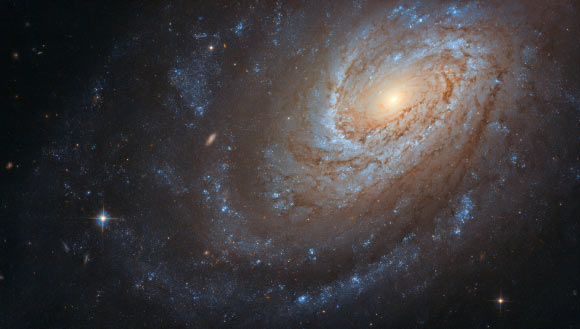Hubble Snaps Stunning Image of NGC 4651 | Astronomy – Sci-News.com
The NASA/ESA Hubble Space Telescope has captured a detailed image of a spiral galaxy called NGC 4651.

This Hubble image shows the spiral galaxy NGC 4651. The color image was made from separate exposures taken in the visible and near-infrared regions of the spectrum with Hubble’s Advanced Camera for Surveys (ACS) instrument. Two filters were used to sample various wavelengths. The color results from assigning different hues to each monochromatic image associated with an individual filter. Image credit: NASA / ESA / Hubble / D. Leonard.
NGC 4651 lies approximately 93 million light-years away in the constellation of Coma Berenices.
Otherwise known as LEDA 42833, UGC 7901 and APG 189, this galaxy was discovered by the German-born British astronomer William Herschel on December 30, 1783.
NGC 4651 is a member of the Virgo Cluster, a massive system of several thousand galaxies which dominates the Virgo supercluster.
The galaxy is also known as the Umbrella Galaxy due to the umbrella-shaped structure that extends from its disk.
“NGC 4651 may look serene and peaceful as it swirls in the vast, silent emptiness of space, but don’t be fooled — it keeps a violent secret,” Hubble astronomers said.
“It is believed that this galaxy consumed another smaller galaxy to become the large and beautiful spiral that we observe today.”
“Although only a telescope like Hubble could give us a picture this clear, NGC 4651 can also be observed with an amateur telescope,” they added.
“So if you have a telescope at home and a star-gazing eye, look out for this glittering carnivorous spiral.”






